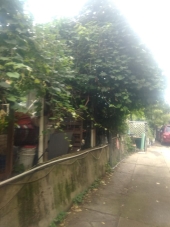
 1
1




And the LORD God took the man, and put him in the garden of Eden to dress it and to keep it. - Gen 2:15




find religion! church
kiva! hyvä! iloinen! pikkumaatila
get stung! beehives
be hospitable! host-a-hive
be antisocial! facespace




And the LORD God took the man, and put him in the garden of Eden to dress it and to keep it. - Gen 2:15

 1
1




find religion! church
kiva! hyvä! iloinen! pikkumaatila
get stung! beehives
be hospitable! host-a-hive
be antisocial! facespace




And the LORD God took the man, and put him in the garden of Eden to dress it and to keep it. - Gen 2:15





Dan Cruickshank wrote:Tel,
This is very encouraging! Do you have any pictures you could offer of those herbs underneath the grape vines?
Thanks!
find religion! church
kiva! hyvä! iloinen! pikkumaatila
get stung! beehives
be hospitable! host-a-hive
be antisocial! facespace




And the LORD God took the man, and put him in the garden of Eden to dress it and to keep it. - Gen 2:15





Dan Cruickshank wrote:Can you comment at all on whether the companion plants you have lower the yields of your grape vines? Most modern viticulture texts are very insistent that the "weeds" (i.e. companion plants) need to be kept to a minimum beneath grape vines.
Thanks!
find religion! church
kiva! hyvä! iloinen! pikkumaatila
get stung! beehives
be hospitable! host-a-hive
be antisocial! facespace
 2
2








 1
1




And the LORD God took the man, and put him in the garden of Eden to dress it and to keep it. - Gen 2:15








Seed the Mind, Harvest Ideas.
http://farmwhisperer.com




Dan Cruickshank wrote:Thanks for the comment on Lavender. I'd looked it up before, but can't seem to remember why I rejected it. I'll take a new look at it again.
Growing grapes 1.5 meters off the ground is an easy test to try. It will cost me a year to try it, but nothing more, so it's worth a try.




Sheryl Napier wrote:
What exactly is meant by growing them 1.5 meters off the ground. Are the first leaves 1.5 off the ground or are they in a pot up on some sort of stand 1.5 off the ground?
My green grapes (who knows what variety) are totally being ruined this year. Do I prune the whole thing back, just let it run it's course or...?
I have 2 muscadines planted that are not having any black rot problem. Can they get it or will they be ok as they are adapted to the south. I live in the south east corner of Virginia.
Thanks, Sheryl
And the LORD God took the man, and put him in the garden of Eden to dress it and to keep it. - Gen 2:15
 1
1




And the LORD God took the man, and put him in the garden of Eden to dress it and to keep it. - Gen 2:15




 1
1




And the LORD God took the man, and put him in the garden of Eden to dress it and to keep it. - Gen 2:15












 2
2





|
Genius is 1% talent and 99% hard work - Einstein
Learn Permaculture through a little hard work
https://wheaton-labs.com/bootcamp
|



